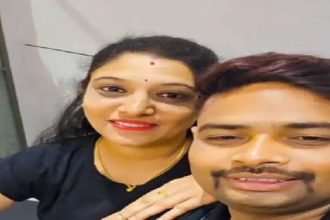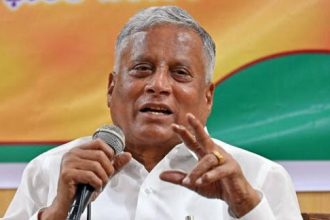Holi – The Festival of Colors and Joy
Holi, the festival of colors, is one of the most vibrant and joyous festivals celebrated in India and by Indian communities across the globe. Known as the festival of love, unity, and the triumph of good over evil, Holi brings people together in a burst of colors, music, and happiness. The festival is not only about playing with colors but also about celebrating harmony, forgiveness, and the arrival of spring.
The Significance of Holi
Holi holds deep cultural and spiritual significance in Hindu mythology. It marks the victory of good over evil and the arrival of spring, symbolizing the end of winter and the beginning of new life. The festival is celebrated on the full moon day of the Hindu month of Phalguna (which usually falls in March).
1. The Legend of Prahlad and Holika
The story of Holi is rooted in the legend of Prahlad and Holika. Prahlad was the son of the demon king Hiranyakashipu, who considered himself to be immortal and expected everyone to worship him. However, Prahlad was a devout follower of Lord Vishnu and refused to worship his father.
Hiranyakashipu’s sister, Holika, had a boon that made her immune to fire. To kill Prahlad, she sat with him in a blazing fire, hoping that the flames would consume him while she remained unharmed. However, due to Prahlad’s unwavering faith in Vishnu, he emerged unharmed while Holika was burned to ashes. This symbolizes the triumph of devotion and goodness over arrogance and evil.
2. The Story of Krishna and Radha
Another beautiful story associated with Holi is that of Lord Krishna and Radha. Krishna, known for his dark complexion, was worried that fair-skinned Radha would not accept him. His mother, Yashoda, playfully suggested that he color Radha’s face. Krishna took her advice, and this playful act of smearing colors became a symbol of love and unity.
The tradition of playing with colors during Holi is inspired by this legend, symbolizing breaking down barriers of race, class, and social status through the playful application of colors.
How Holi is Celebrated
🌸 Holika Dahan
The celebration of Holi begins the night before the main festival with Holika Dahan. Large bonfires are lit in open spaces, symbolizing the burning of evil and negative forces. People gather around the bonfire, sing traditional songs, and perform rituals seeking blessings for health, happiness, and prosperity.
🌈 Playing with Colors (Rangwali Holi)
The next day is the most colorful and exciting part of the festival. People of all ages come together to play with gulal (colored powder), throw water balloons, and spray colored water using pichkaris (water guns). The atmosphere is filled with music, laughter, and excitement as friends and strangers alike chase each other with colors and dance to the beat of traditional and Bollywood songs.
It is a time when social norms are relaxed – barriers of age, caste, and status dissolve as everyone becomes one in the joyous celebration. The phrase “Bura na mano, Holi hai!” (“Don’t feel offended, it’s Holi!”) reflects the playful and carefree spirit of the festival.
Traditional Foods and Drinks
No Indian festival is complete without delicious food, and Holi is no exception. Some of the most popular Holi delicacies include:
- Gujiya – A sweet dumpling filled with khoya (dried milk solids), coconut, and dry fruits.
- Thandai – A spiced, milk-based drink made with nuts and flavored with rose and saffron.
- Malpua – Deep-fried sweet pancakes soaked in sugar syrup.
- Puran Poli – A stuffed flatbread filled with sweetened lentils and jaggery.
In some parts of India, people also enjoy bhang, a drink made from cannabis leaves mixed with thandai, which adds to the festive mood.
Regional Variations of Holi
Holi is celebrated differently across various parts of India, each region adding its own unique flavor to the festival:
🔸 Barsana and Nandgaon – Lathmar Holi
In Barsana (the birthplace of Radha) and Nandgaon (the village of Krishna), Lathmar Holi is celebrated with women playfully beating men with sticks (lathis) while the men try to protect themselves with shields. This playful act reflects Radha and Krishna’s teasing relationship.
🔸 Vrindavan and Mathura – Devotional Holi
Vrindavan and Mathura, closely associated with Krishna’s childhood, celebrate Holi with devotional songs, flower petals, and grand processions. The atmosphere is filled with bhajans and the chanting of Krishna’s name.
🔸 Shantiniketan – Cultural Holi
In West Bengal, Rabindranath Tagore introduced Basanta Utsav (Spring Festival) in Shantiniketan. It is celebrated with traditional songs, dance, and cultural performances, reflecting the essence of Bengali art and culture.
🔸 Punjab – Warrior Holi
In Punjab, Hola Mohalla is celebrated a day after Holi. It is a martial festival where the Sikh community showcases physical strength, martial arts, horse-riding, and mock battles. It reflects the valor and warrior spirit of the Sikh tradition.
Spiritual and Social Message of Holi
Holi carries a profound spiritual and social message:
✔️ It symbolizes the triumph of good over evil.
✔️ The festival encourages forgiveness and reconciliation.
✔️ It promotes unity by breaking down barriers of caste, religion, and social status.
✔️ The colorful celebration reflects the diversity and vibrancy of Indian culture.
Holi reminds us that just as different colors come together to create a beautiful picture, people from different backgrounds and walks of life can come together in harmony and create a more united and compassionate society.
Eco-Friendly Holi – A Growing Trend
In recent years, there has been a growing awareness about celebrating Holi in an environmentally friendly way. Here are some ways people are adopting a more sustainable approach:
- Using natural and organic colors made from flowers, turmeric, and herbs instead of chemical-based powders.
- Reducing water wastage by limiting the use of water balloons and excessive splashing.
- Encouraging community celebrations to minimize individual environmental impact.
- Promoting the use of biodegradable colors to avoid pollution.
Conclusion
Holi is more than just a festival of colors – it is a celebration of life, love, and togetherness. It is a reminder to let go of past grievances, forgive, and embrace each other with open hearts. The joyous laughter, vibrant hues, and playful spirit of Holi reflect the true essence of Indian culture – a culture that thrives on unity, diversity, and love.
So, this Holi, let’s spread love, laughter, and positivity. Let the colors of Holi fill your life with happiness and harmony! 🌸🌈✨
🎉 BV News5 Wishes You a Very Happy and Colorful Holi! ❤️
May the festival of colors brighten your life with happiness, prosperity, and joy. Let go of negativity, embrace positivity, and celebrate the spirit of togetherness. Have a safe, eco-friendly, and joy-filled Holi! 🌸🌈✨









